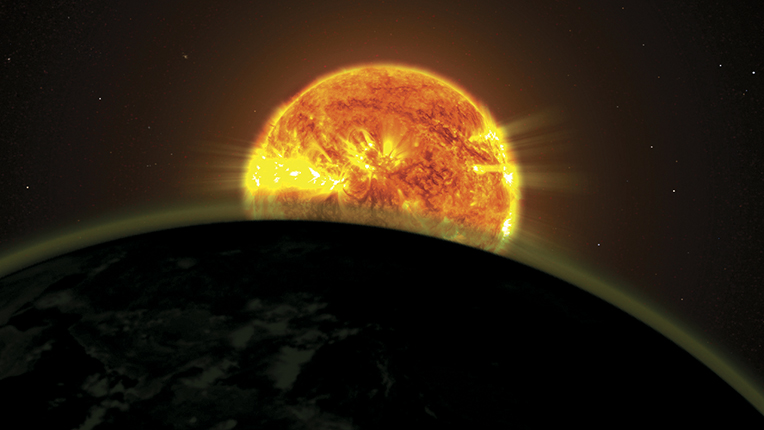Machine learning solves an exoplanet atmosphere
DOI: 10.1063/PT.3.3991
For years the Hubble Space Telescope has captured crisp spectral images of exoplanets transiting their host stars. Because those images include light filtered through the exoplanets’ atmospheres, they contain clues about atmospheric composition. (See the Quick Study by Heather Knutson, Physics Today, July 2013, page 64

NASA GODDARD SPACE FLIGHT CENTER, CC BY 2.0

But Hubble’s workhorse detector for exoplanet atmosphere observations, the Wide Field Camera 3, collects light in only 13 wavelength bins. The James Webb Space Telescope, scheduled for a 2020 launch, will be able to resolve spectra into hundreds of bins. The abundance of data could yield far more detailed portraits of extrasolar atmospheres, but it also creates a challenge: how to decipher all that information.
Enter Kevin Heng and his coworkers at the University of Bern in Switzerland. The researchers have now demonstrated that machine learning can be used to extract atmospheric properties from even the most complicated transmission spectra. Heng and his colleagues trained their machine on tens of thousands of model spectra that were calculated analytically for atmospheres of varying temperature, cloudiness, and composition. The machine learning algorithm plots the spectra in N-dimensional space, where N is the number of wavelength bins in each spectrum, and then identifies clusters in that multidimensional space. Model atmospheres belonging to the same cluster tend to share similar physical attributes, so when the trained machine is given a real-life spectrum to analyze, it plots the spectrum and assigns to it the physical attributes of the nearest cluster.
Reassuringly, a test-run analysis of the gas-giant planet WASP-12b yielded results similar to those of more conventional techniques. The test was implemented in 13-dimensional space, to match Hubble’s 13 spectral bins, but future implementations using more detailed spectra could include thousands of dimensions. (P. Márquez-Neila et al., Nat. Astron., 2018, doi:10.1038/s41550-018-0504-2
